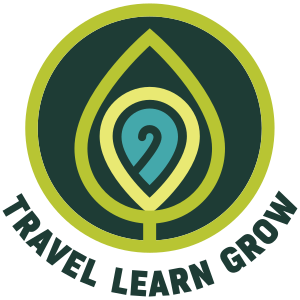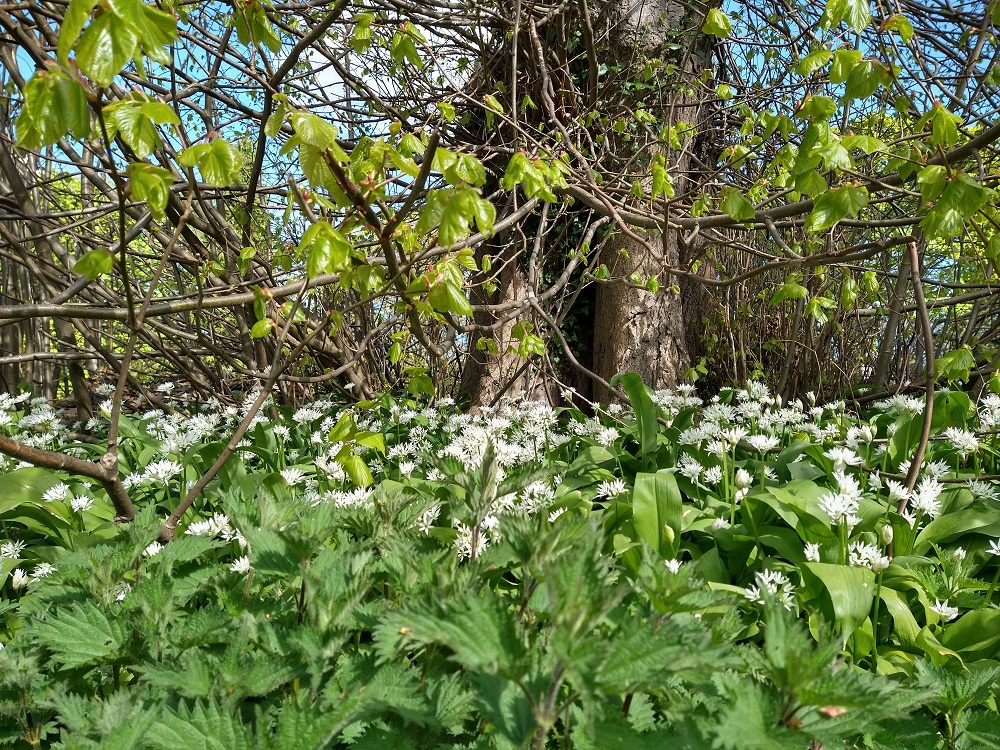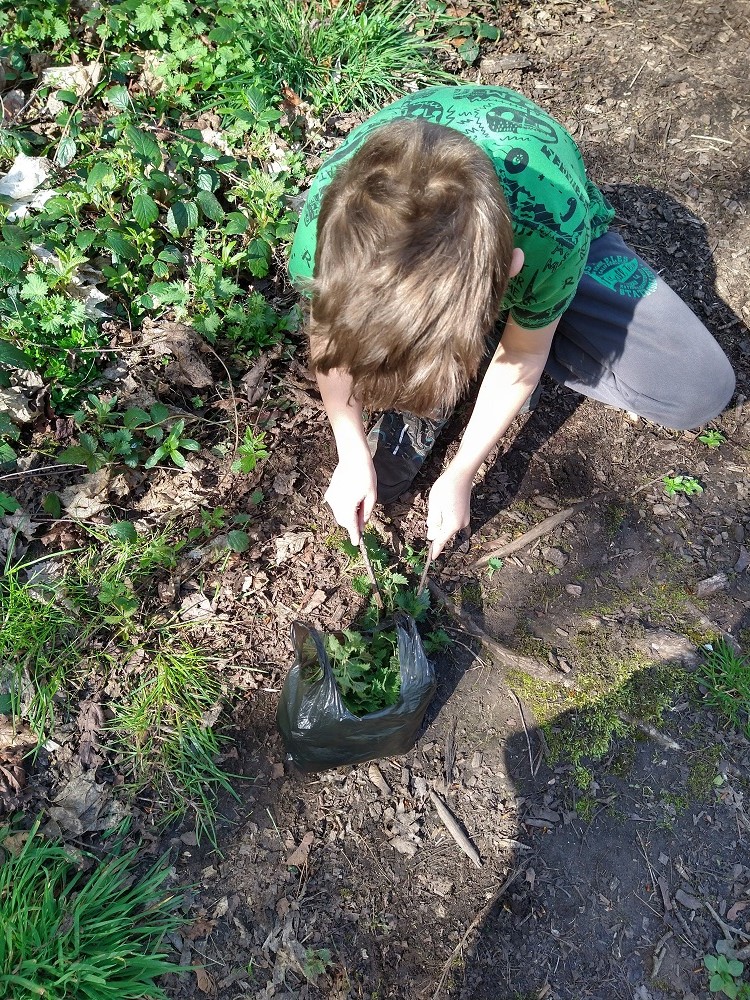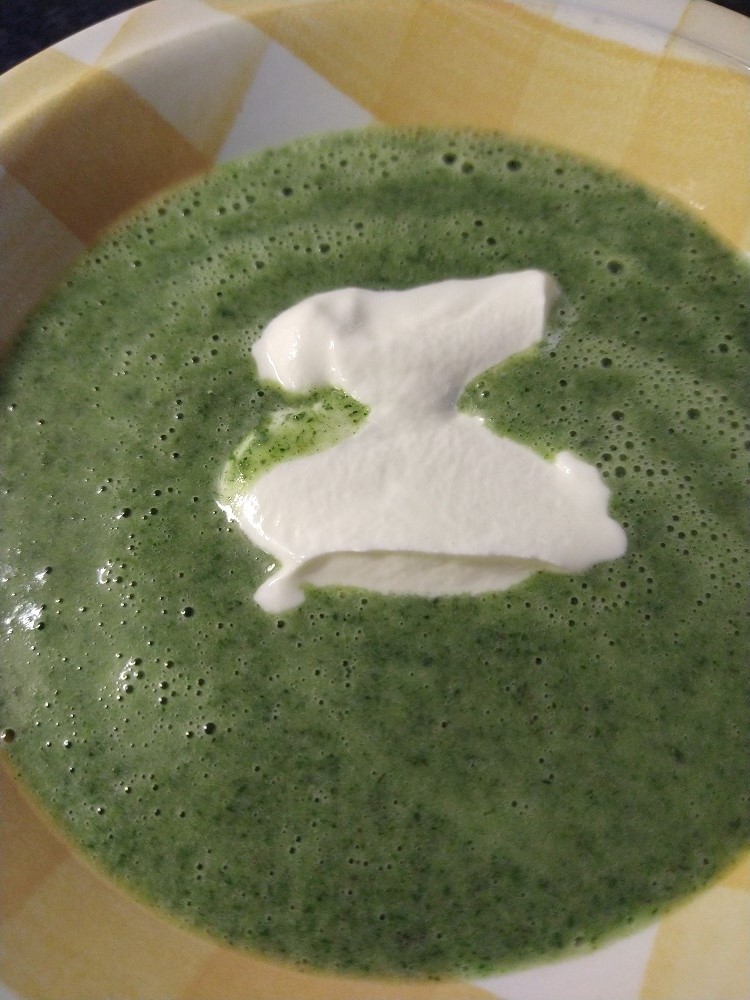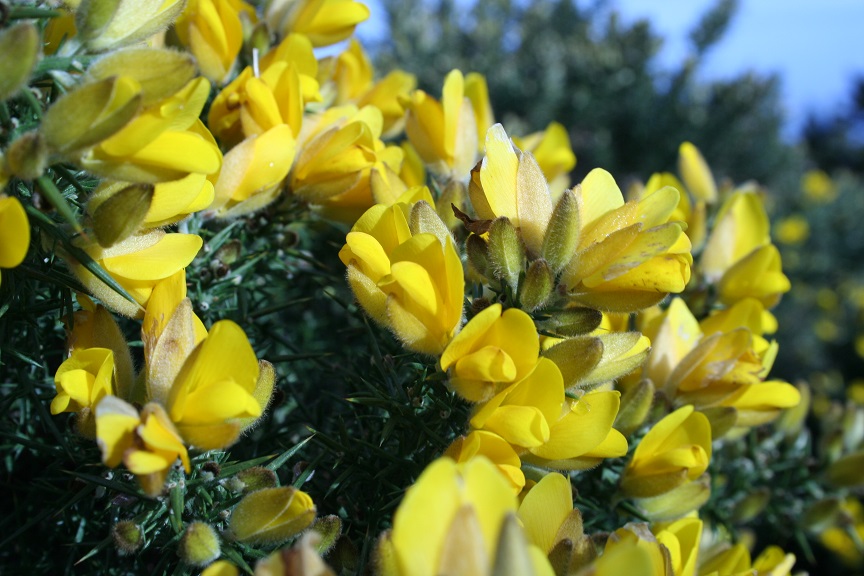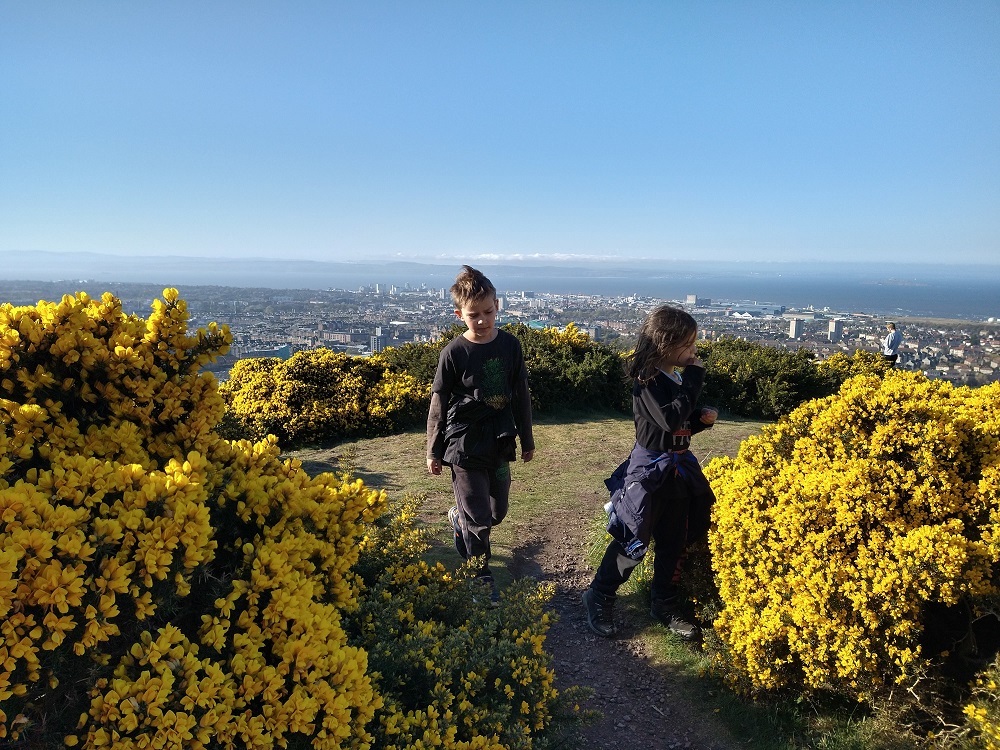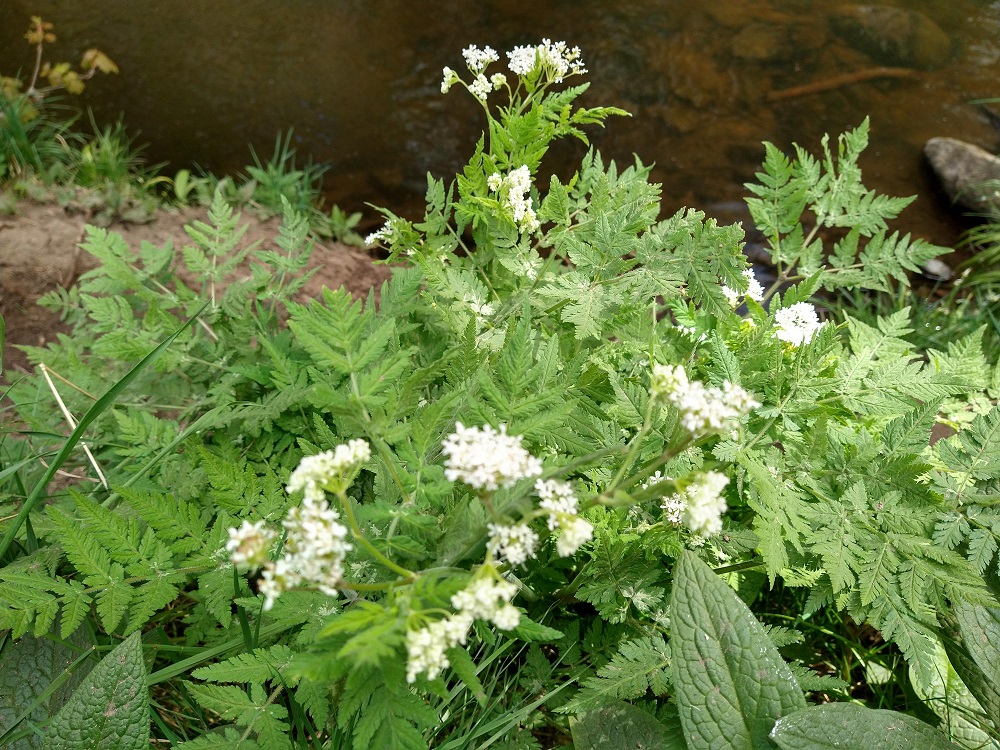When Covid-19 hit the UK – empty shelves in the stores, social distancing (or from child’s point of view awkward avoiding neighbours and people), sense of fear and worry you could taste in the air – both my kids and our four legged granny had the same reaction. Their natural response was to ‘retreat’ into isolated parts of nature. Areas that are out of sight, protected with bushes and/or trees. And that’s what we did. Lilo was happy with quiet meditation time, boys enjoyed inventing games.
Visiting those few spots in the park helped us tremendously. Feeling safe and as one usually does when in nature – nurtured. What popped in their minds these last few weeks was survival. They know all about building den’s and making fire but those empty shelves were quite a shock. Main question, and one no children on Earth should ever need to ask, was – what if there is no more food left. We searched through books and foraging sites and our daily walks became tasting tours. Luckily, we live near Holyrood Park and being the springtime we were in for a quite of a treat. My favourite were flowers and wild garlic, their was garlic so we’ll start with that green deliciousness.
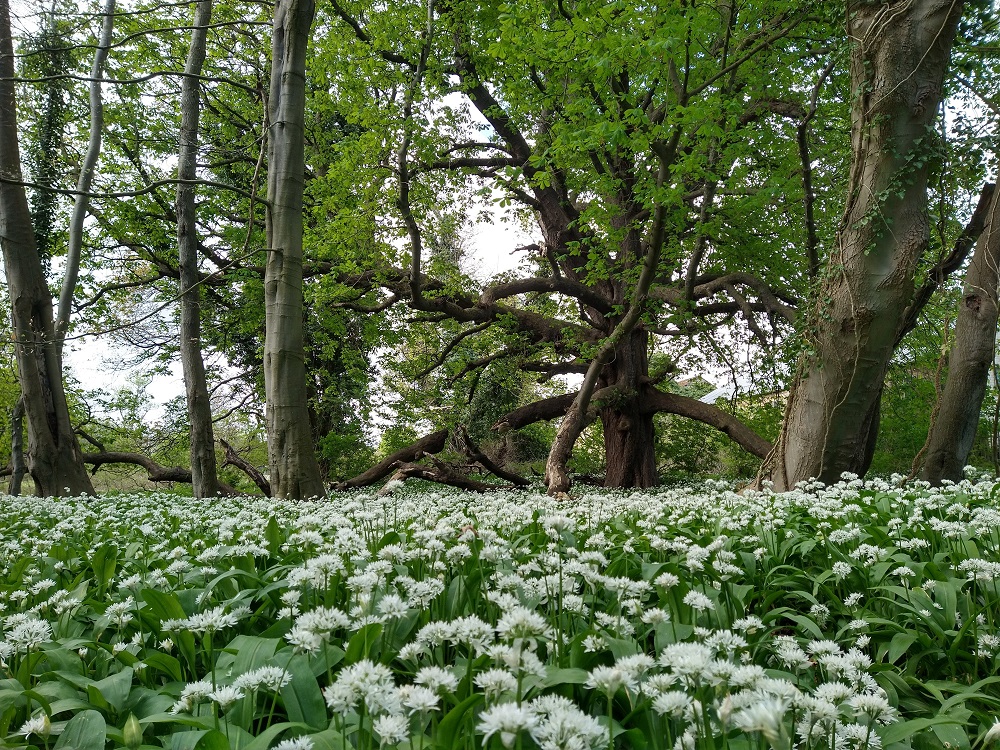
Wild Garlic
Similarities with Lilly of the Valley which is very poisonous plant was enough to take identifying wild garlic very seriously.
What we learned? Most distinctive is the smell of leaves when crushed – if they don’t smell like garlic they aren’t. Tricky part is once your hands smell of it it’s not easy to distinguish is it you hand or the leaf that are the garlicky one. Our timing was good so there were other pointers – flowers of these two plants are quite different. Plus, garlic leaves grow from the plants base, while Lilly has two or three higher on the stem. Important – not picking the bulbs, we want something for next year.
What we made? Soup and risotto. Modifying the recipes and following our usual stream of thought in the kitchen– the simpler the better.
One thing boys enjoy is cooking. Specially my older one who is very much into independence this days. Hence the preference for simplicity in the kitchen. And here are our versions of the recipes.
Soup
Ingredients: Potato, two carrots, around 200 grams of wild garlic
- Heat a drizzle of oil; add potato and carrots cut in chunks; add 400ml of water, salt, black pepper and one tsp of mustard (of half of vegetable cube).
- Bring to boil then reduce the heat and simmer until vegies are tender.
- Add wild garlic leaves and seasoning (use flowers for garnishing the soup).
- Mash with blender.
- Sour crème can be added once served.
Wild Garlic Risotto
In original recipe, pesto for risotto is made with grated parmesan and pine nuts. We didn’t have pine nuts, so we used almonds. And parmesan is out of the question if I wish my children to enjoy the meal.
Ingredients: 50-150 grams of wild garlic, rice, garlic, salt and black pepper, olive oil, grated almonds
- Steps: mix well in blender wild garlic, tablespoon of olive oil, salt and almonds
- Cook rice either in salted water or if preferred in water with vegetable stock
- Heat a drizzle of oil and garlic, add rice and pesto.
- We covered risotto with sour cream mixed with what was left of wild garlic.
Enjoyed it like bears after hibernation 😊
Nettles
With nettles – the younger the better.
Important part – pick only the baby leaves from the tips. Of course, use whatever needed (gloves etc) to protect your hands. Although both my boys are quite handy and able to pick them without any protection, and I am still figuring out how is that possible. This time it was nettle soup on the menu (prep the same as wild garlic), as I was outnumbered. My favourite is still nettle pie. Maybe next batch.
Gorse
And then to my big surprise, we learned that this spiky beauty that’s covering most of Holyrood park through the whole year is common Gorse and its bright yellow flowers are edible raw and can be made into tea. Even the buds can be pickled and used like capers.
I love adding colours on my plate and with that slight coconut aroma I couldn’t wait to try them out in all sorts of different combinations. One included ice cream!
However, you should not eat flowers in very large quantities on a regular basis as they contain slightly toxic alkaloids.
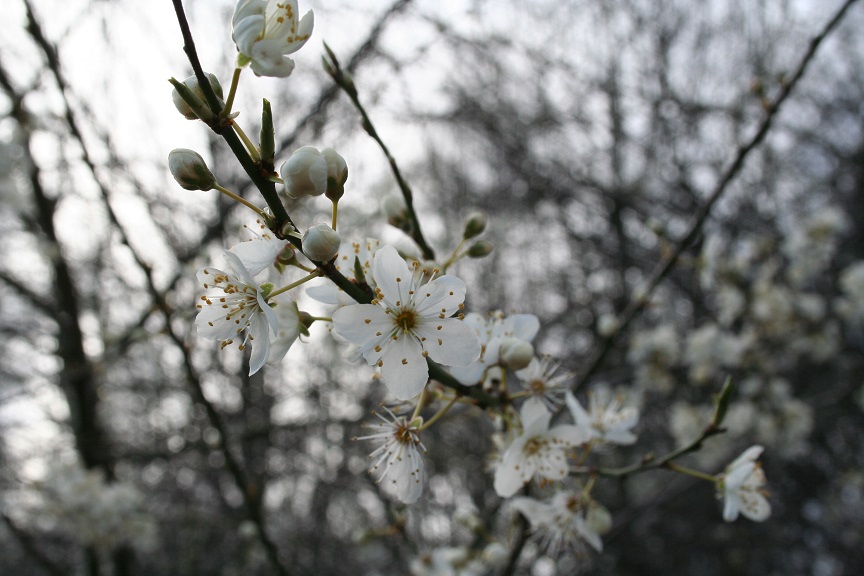
Blackthorn spring flowers taste like marzipan 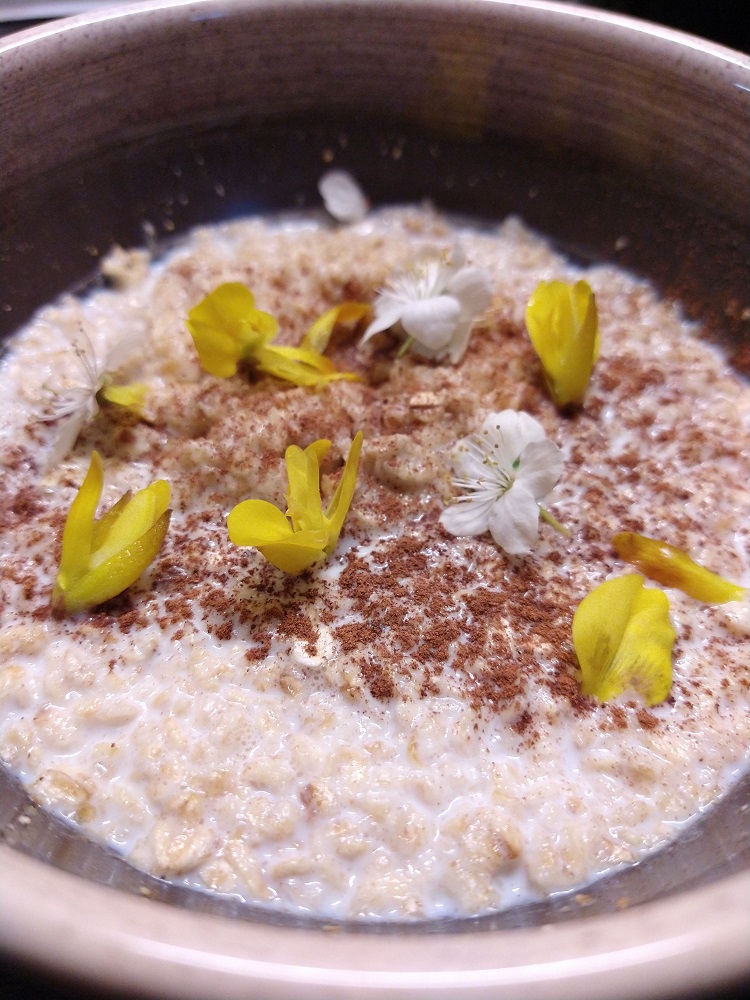
Oat porridge with blackthorn and gorse flowers
While on the topic of survival – Gorse wood is great kindling, and its ash, rich in potassium, can be used to make a lye for soap making.
One more edible yumminess on our usual daily walk were light almond flavoured Blackthorn flowers, so we got few of those and ended the day with a warm comforting cinnamon & freshly picked flowers porridge.
And last but not least…
Sweet Cicely
Now this one asked for a bit more improvisation as there is a few recipes online but for most we didn’t have all the necessary ingredients. It tastes like licorice and smells of aniseed so we made it into a dessert.
We made a mix for pancakes but without an egg, chopped sweet cicely leaves, made wee cute balls and fried them in oil. Made like this (we tryed it out) can be eaten either with something sweet – like jam, or plum spread, or sour – sour cream with garlic, or salsa. Delicious either way.
Nose will be your best guide with cicely. It is similar to some other plants that are poisonous, but the smell of aniseed is very strong and specific with cicely so that should help avoid confusion. One other specifics – white paint blurbs towards the base of leaves (not all leaves will have these). Both leaves and flowers can be eaten.
I was always interested in foraging but until now, never motivated enough to actually explore all nature has to offer. Super happy we did. It has been an awesome and delicious project. We, of course, tend to continue with our foraging adventures as the seasons and plants, or our surroundings change. Until then check our other posts on survival skills…
Inspired to stay longer in nature with your wee explorers? When chance presents itself try Building dens and making fire…
Disclaimer
The most important thing to remember when identifying wild foods is: If in doubt, leave it out!
This article does not provide a complete treatment of all edible nor of all poisonous plants that may be present in the habitat where you find the above-mentioned plants. Any foraging you do on your own is at your own risk. The safest way to learn about edible wild plants is for someone who already has the knowledge to show you in person.
